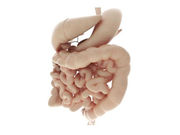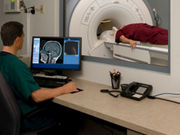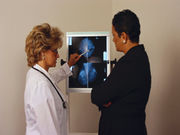Radiology
Home Radiology
Four Methods Can Diagnose Fetal Nasal Bone Hypoplasia
Similar sensitivity for all methods for identifying fetal NB hypoplasia in second trimester
Slowing Noted in Growth of Cancer Expenditures
During 2007 to 2009, share of expenditures for hospital-based care dropped to low of 48 percent
Uptick in CT Scans for Minor Trauma Cases in California
Researchers urge caution in weighing risks and benefits
ASCO: New Regimen Effective for Locally Advanced Rectal Cancer
Similar effectiveness but less toxicity for short-course radiation followed by chemotherapy
Physicians Choose Less Aggressive Care at End of Life
Doctors less likely to die in a hospital, have surgery, and to be admitted to the ICU
Greater Transparency Being Promoted in Research
Move toward greater transparency has extended beyond medication products to other interventions
Diagnostic Imaging Down With High Deductible Health Plans
Patients may not be equipped to discern which tests are medically necessary
Incidence of Radiation-Induced Breast Cancer Examined
Women with large breasts projected to have increased risk of radiation-induced breast cancer
False-Positive Mammography Results Are Common
Highest rates of false-positive results and additional imaging seen for women aged 40 to 49 years
Polyhydramnios With Normal U/S Linked to Adverse Outcomes
Higher rate of fetal malformation, genetic syndromes, neurologic disorders, developmental delay



















